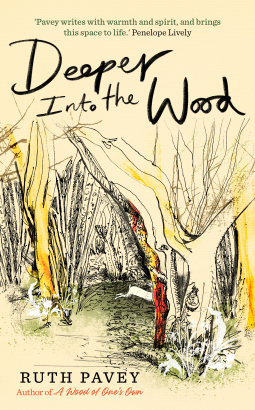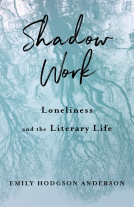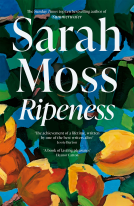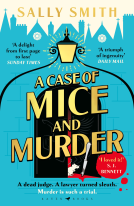
Deeper Into the Wood
by Ruth Pavey, author of 'A Wood of One's Own'
This title was previously available on NetGalley and is now archived.
Send NetGalley books directly to your Kindle or Kindle app
1
To read on a Kindle or Kindle app, please add kindle@netgalley.com as an approved email address to receive files in your Amazon account. Click here for step-by-step instructions.
2
Also find your Kindle email address within your Amazon account, and enter it here.
Pub Date 27 May 2021 | Archive Date 26 May 2021
Talking about this book? Use #DeeperIntotheWood #NetGalley. More hashtag tips!
Description
Following the success of Ruth Pavey’s debut, A Wood of One's Own, that introduced readers to her four-acres of verdant land in the Somerset Levels, Ruth reflects on the fate of her wood. Beneath the canopy of trees she spent 20 years planting, she sees nature’s forces changing rapidly with the diversity of species dwindling. When the rabbits suddenly vanish, she knew it was time to take a closer look at the undergrowth and what she could do to preserve the legacy of the wood for generations to come.
Interwoven with Ruth’s candid descriptions of the practical challenges of land management are forays into the Levels' local history, as well as thoughtful portraits of its inhabitants both past and present. Accompanied throughout by the author's evocative hand-drawn illustrations, Deeper Into the Wood is a lyrical and inspiring story; a potent reminder of nature's delicate balance and our responsibility toward its preservation.
Advance Praise
***PRAISE FOR A WOOD OF ONE'S OWN***
'Delightful... Pavey writes with warmth and spirit, and brings this space to life.' Penelope Lively
'The satisfactions are many... that all her readers can share in.' The Lady
'So beguiling... Pavey's writing is everywhere amiable.' The Times Literary Supplement
'A lovely story a super book.' Steve Yabsley, BBC Radio Bristol and Somerset
'Draws together childhood memories, local history... and literary penumbra.' Sunday Telegraph
'Pavey's love for her small patch of land shimmers off the page [in this] narrative of warmth, honesty and great spirit made all the more beautiful by Pavey's own lively and accomplished drawings... this lovely book is itself a gift encouraging country-dweller and townie alike to marvel at the infinite possibilities at the heart of a single tree.' The Daily Mail, Book of the Week
'A lyrical story of desire and determination, soft and gentle, warm and wise in a wicked world.' Camden New Journal
'Fascinating... Pavey bring us into a world of escape from the hurly-burly of towns... will be enjoyed by many readers.' Nudge
Available Editions
| EDITION | Hardcover |
| ISBN | 9780715654279 |
| PRICE | £14.99 (GBP) |
Links
Featured Reviews
'Deeper Into the Wood' is a pleasing, gentle read, interspersed with some lovely artwork that I'm sure looks even better in a printed book, but still had a sparing to beauty to it when viewed with my e-reader.
Although I haven't read the book that comes before this one, that isn't necessary. Pavey gives the background to how she came to acquire the wood, and the management she's applied to it since. The narrative is almost in a stream-of-thought style, with Pavey flowing from the flora and fauna in the wood, to her quest to determine the providence of the water in it, to local history. I admit that I scanned over the passages concerning the attempts to trace the woods' original owner from several centuries ago. I was much more interested in the wildlife part. Handily, the book includes appendices of bird, plant and moth surveys carried out in the woods.
It's a fairly short read in all, and provides a glimpse into one woman's personal acts of observations of nature - both delightful and saddening, as Pavey tracks the diminishing and vanishing of species in the time she has owned the wood.
(With thanks to Duckworth Books and NetGalley for this ebook in exchange for an honest review)
 Marian G, Reviewer
Marian G, Reviewer
The first impression one gets from the earliest sentences in this book is Ruth Pavey loves her small patch of Somerset with a passion. The book is a warm kind-hearted look at the changing seasons of her small patch of woodland and how the tendrils of the modern world are impacting on the natural history of the area. Ruth cares about the whole wide-ranging mix of species on her patch and their struggles.
The nuances of the seasons are beautifully embroidered within Ruth’s gentle narrative, which is heartfelt in its honesty and description. She also enhances the chronicle of the year with a number of divergences in each chapter into a number of fascinating vignettes on local history, geology, and culture of the area of the wood. What also helps to bring the story to life is the compendium of individuals experts and artisans that embellish the story with interesting facts and information.
This book also raises the spectre of the serious issues of our time species loss and the impact that humanity has on the natural world, Ruth approaches this issue thoughtfully and with the empathy of an individual who cares about her footprint on the world. The book was a pleasure to read.
 Abby S, Reviewer
Abby S, Reviewer
A lovely book Ruth Pavey draws us into her land her life .Through her lyrical writing her world her life in nature is very vivid.Her drawings add to charm of this memoir. I will be gifting and recommending this wonderful book.#netgalley #duckworthbooks
 catherine h, Reviewer
catherine h, Reviewer
I so enjoy reading books like these. So intimate, like reading a journal. I observe the wildlife in my tiny postage stamp yard in a semi-suburban city. I've lived in mine for 50 years and have watched many changes. For a long, long time I saw it changing for the worst, now it seems to be rebounding with wildlife returning (I saw a turkey vulture the other day!). Maybe things will turn around for Ruth Pavey and community. Organic farming will help, easing of traffic, too (we all really need more public transportation. Especially here in the States. I enjoyed the illustrations, too. Whole book is simply a lovely read. Make a great gift for a nature lover or gardener.
This book took me on a wonderful journey on what its like to live in a wooded rural area. Yes it might of only been a second home but people seem to be far to critical to appreciate the work people like the author is doing to manage her wooded area and surrounding fields to be more sustainable. To allow a lot a variance in the nature that are becoming more scarce. It follows the story for her speaking to various people gaining knowledge on how to deal with the decline of nature. More people should read this book and truly appreciate the knowledge the author brings to the story. This book contain beautiful little pictures drawn by the author which brings a great sense of life to the pages. I enjoyed this book so much I will be reading further books by this author and thank the author for producing such a wonderful insight into the little things we can do to encourage more insects into your garden. A truly delightful book.
 Hilary W, Reviewer
Hilary W, Reviewer
Some readers may be aware of Pavey’s first memoir of her wood. The diary that informed this new book – together with her own illustrations – was drawn up in 2019, which was the 20th anniversary of her acquiring her four acres of land off the Aller escarpment in the Mendips, Somerset. Despite Covid year reservations it was prepared through 2020 for publication now. As well as interest in its own right, it therefore acts as a strange indicator of how important, and urgent, environmental concerns could be bumped off the national and international agendas for consideration and action.
With her four heavily overgrown acres Pavey acquired the remains of old orchards and hazel woods and also as it becomes increasingly clear here a slice of local landscape and history. This book twenty years on shows that she is still learning, still planting and managing (with the help of a gardener) to try and preserve the important ancient, but introduce the new and protect the eco-structures and habitats of the place. Albeit it should be said, largely as a visitor, from her London home. Her year is presented largely in extended diary form, but with musings that cut across specific dates. Rather like an ongoing conversation with a friend who is not always there, but can be picked up at any point.
Twenty years on Pavey’s concerns, based on her awareness of the local weather, changing agricultural practices, increased residential development are centring around the decline of various insect, bird and animal species that she might have once taken for granted. She, admitted by herself as late in the process, decides to identify local experts to help undertake survey assessments of species – these (and their processes) are described here and the results listed in the appendices. She is interested too in the names of her land pieces and tries to track their history through place names and genealogical research. She has to admit, too, that her attempt to track local memories of older agricultural practices before the larger farms became the norm were regrettably largely too late. She quietly shows the number of people quietly trying to record and protect things they consider of importance. But all these searches show how deep local links (and support networks) can quietly run still. But her reliance on “volunteers” for so much incidentally shows another potential evolving “Covid” casualty.
Will you enjoy this quiet (mildly political with a small p) book? It almost certainly speaks to the quiet interests of many people in the wildlife, plants and bird around them – an interest that we are told expanded during “lock-down”. The “explanations” of various processes, techniques and simple historical developments might be new to some, but at least in part well known to others. While it seemed to this reader to be somewhat old-fashioned and ideas not tightly enough presented, if you are interested in landscapes and the environment – and if as a bonus you recognise the area – it is a quiet review of what you already know – but with the perspective of somebody else’s garden.
The end-words seemed slightly less certain, but were a belated attempt to politely address the conflict between the fact that farmers own and manage so much land – and do it for a living and the serious loss of habitat and species. How much blame should they carry? And how much of the damage is outwith their control? This last dialogue quietly points to the difficulties of preventing serious – possibly irreversible – degradation, in the face of the requirements of your neighbours around you, people with whom you mix and might rely on.
Readers who liked this book also liked:
Rick Riordan; Mark Oshiro
Children's Fiction, LGBTQIA, Teens & YA
Keith Martin; Konstantinos Mersinas; Guido Schmitz; Jassim Happa
Business, Leadership, Finance, Computers & Technology, Reference



















